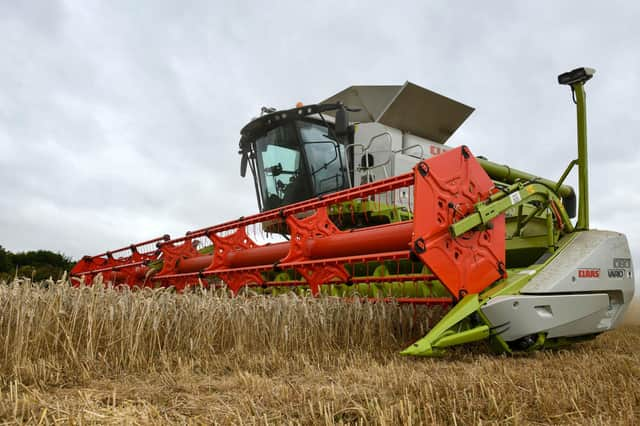Farming: ‘Digital farm’ pilot project offfers vision of the future


That is the premise behind a new “digital farm pilot project being set up by SmartRural, a subsidiary of the co-operative umbrella group, SAOS, to highlight the benefits which linked high-tech systems could provide to the farming industry.
The project will use the Long Range Wide Area Network (LoRaWAN), a radio communication system which receives data from simple, battery-powered sensors up to 15km away, through a base station installed on a farm building.
Advertisement
Hide AdAdvertisement
Hide AdLocal parameters such as rainfall, river levels, soil temperature and moisture, PV battery bank condition, temperature and humidity in farm buildings, and the location of cattle and farm machinery can all be picked up by the sensors and logged on the farmer’s smartphone app - and these details can be shared with agronomists and other interested parties.
Part sponsored by NFU Mutual, the insurer’s agritech specialist, Charlie Yorke, said that the work would help encourage farmers to adopt technology to make their businesses more sustainable, profitable and safe.
“AgriTech is playing an increasingly important role in the future of farming, but connectivity continues to be a major barrier to innovation,” said Yorke, who said the project promised to provide a better insight into the effectiveness of LoRaWAN sensor technologies in supporting on-farm decision making.
SmartRural’s Paul Lindop said that many sensors were now available at reasonable cost and had battery life of up to ten years, which meant the sensors were essentially “fit and forget”: “Once a base station is installed, the incremental costs of adding new sensors is minimal. Thresholds are set for each sensor, beyond which the farmer will receive an alert via the smartphone app that action is required.
Yorke said the range of sensors available was "growing by the day” and these offered a cost-effective solution for capturing meaningful data to help farmers make informed decisions at the right time.
“Under ideal conditions, coverage can extend for many miles and each base station can communicate with thousands of installed sensors.”
He said the use of such technology could save hours of a farmer’s working day as “just in case” checks could be drastically reduced:
“For example, fitting a water trough in a remote field with a simple sensor would identify if the water level is where it ought to be, rather than too low or overflowing,” he said.
Advertisement
Hide AdAdvertisement
Hide Ad“Likewise, a soil temperature and humidity sensor could be used to determine the optimal time for planting of crops or the application of fertiliser.”
The pilot will be conducted on Balgay Farm, a mixed arable and stock farm of 1,000 acres in the Carse of Gowrie, between Perth and Dundee.
Iain Graham, who owns the farming business, said that his team was not only looking forward to seeing efficiency improvements, but also improvements in the quality of life of the people working on the farm.